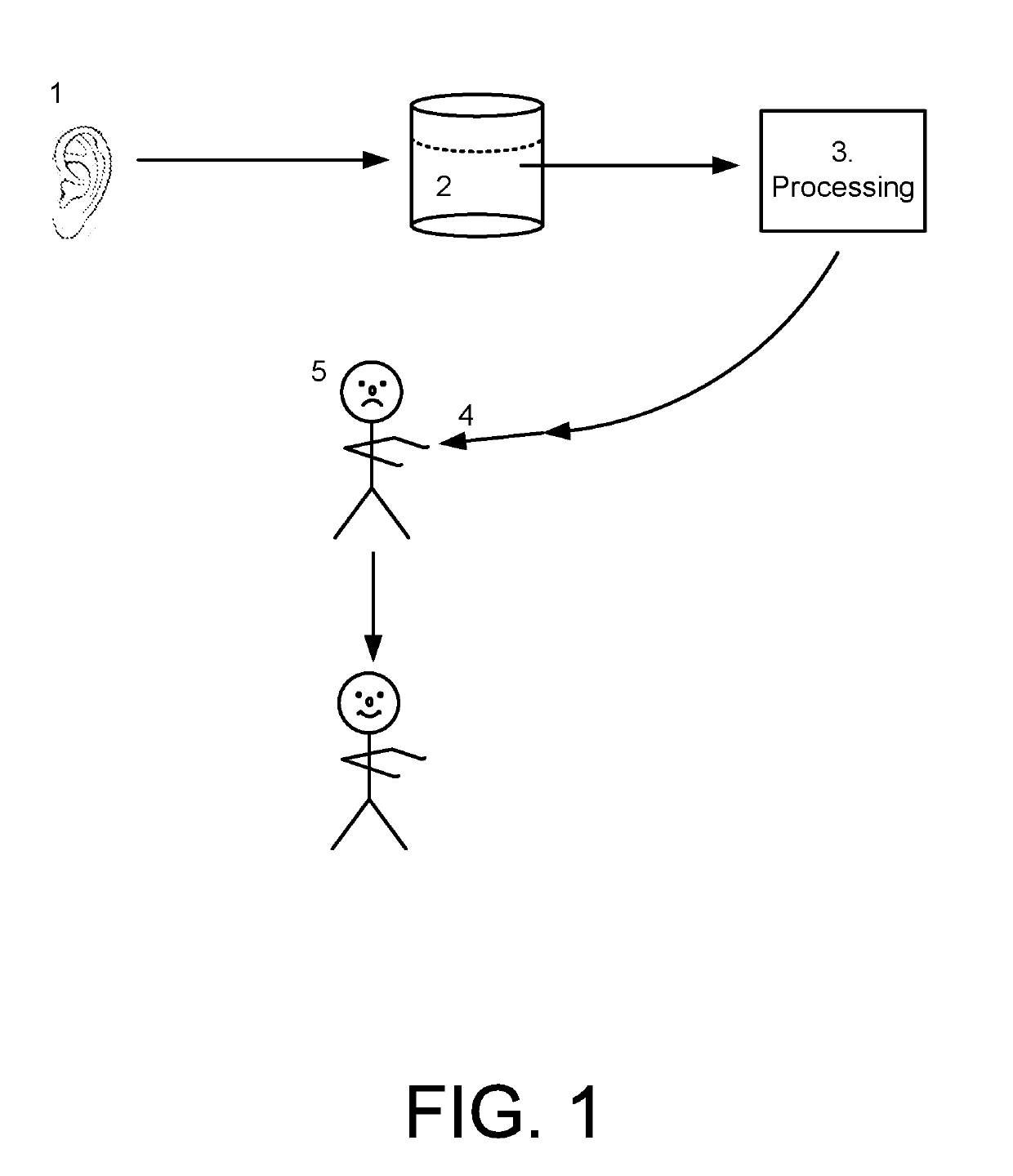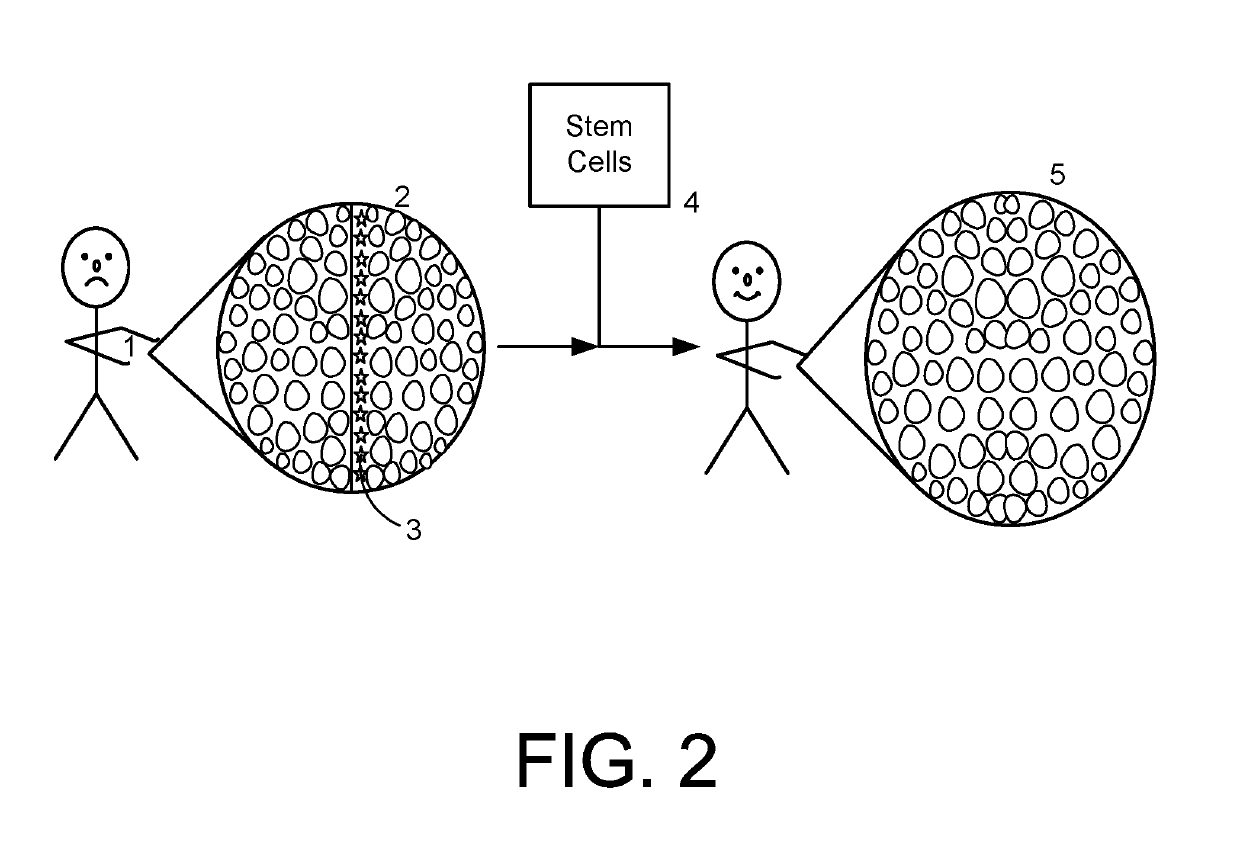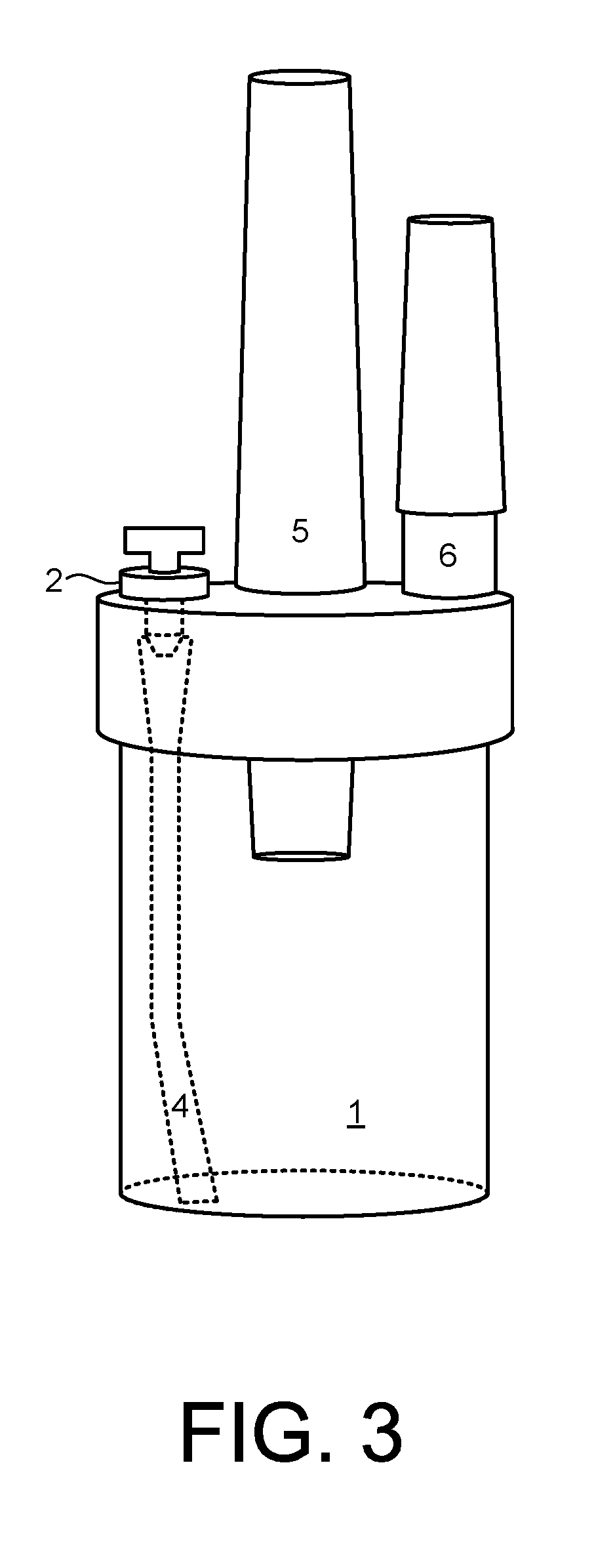Collection of amniotic fluid for wound healing
a technology for amniotic fluid and wound healing, which is applied in the field of collection of amniotic fluid for wound healing, can solve the problems of not being able to actually perform according to its design, failing to consider the addition of a suitable hemostat, and often leaving a mother with visible scars, etc., to improve the density of therapeutic biological materials, improve the consistency of the resultant solution, and improve the quality of wound healing.
- Summary
- Abstract
- Description
- Claims
- Application Information
AI Technical Summary
Benefits of technology
Problems solved by technology
Method used
Image
Examples
Embodiment Construction
[0023]FIG. 1 shows a basic outline of the method claimed. Extracted amniotic fluid (1) is collected in a sterile container (2). The sterile container prevents contamination of the solution during the course of the coincident operation, which may be a C-Section operation. After collection, amniotic fluid can be withdrawn from the container and processed (3). Once the solution has an appropriate density and consistency, it can be administered (4) to the wound of a patient (5). Because of the therapeutic capability of the solution, the wound healing is fast, clean, and effective (6).
[0024]FIG. 2 shows a perspective and an exploded view of one embodiment of the environment claimed. In this embodiment, an incision (1) is clearly visible on the skin of a patient. A blown up view (2) of the stressed tissue would indicate the propagation of a growth factor cascade, the release of several chemical signals (3). As the stem cells are applied to the wound (4), these signaling molecules promote ...
PUM
| Property | Measurement | Unit |
|---|---|---|
| Vacuum | aaaaa | aaaaa |
Abstract
Description
Claims
Application Information
 Login to View More
Login to View More - R&D
- Intellectual Property
- Life Sciences
- Materials
- Tech Scout
- Unparalleled Data Quality
- Higher Quality Content
- 60% Fewer Hallucinations
Browse by: Latest US Patents, China's latest patents, Technical Efficacy Thesaurus, Application Domain, Technology Topic, Popular Technical Reports.
© 2025 PatSnap. All rights reserved.Legal|Privacy policy|Modern Slavery Act Transparency Statement|Sitemap|About US| Contact US: help@patsnap.com



